| |
|
Sunday, April 20 Beth Am~Second Night Seder
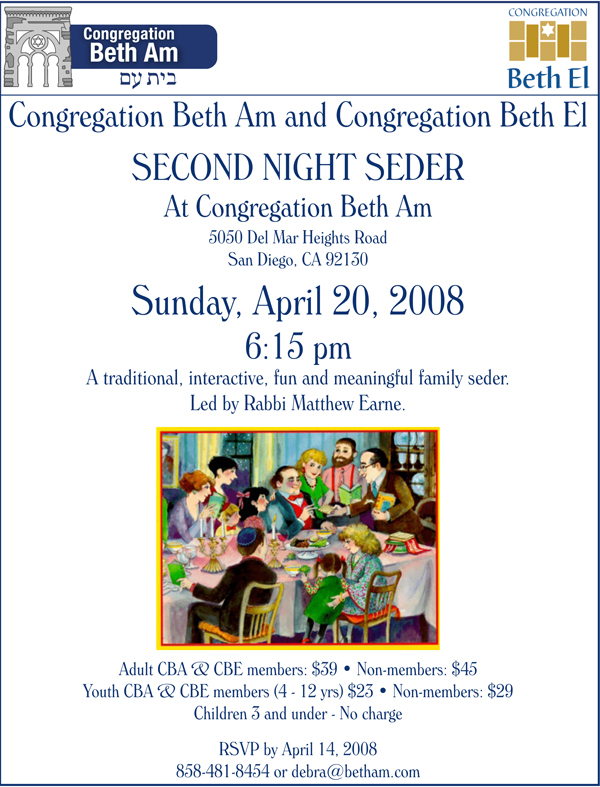
Sunday, May 18 Community Israel Independence CelebrationWednesday, May 28 JFS~Ellen Saks lecture on mental illness
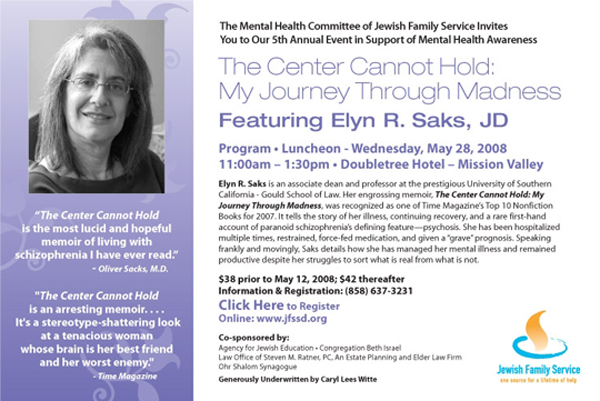

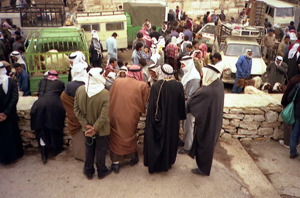 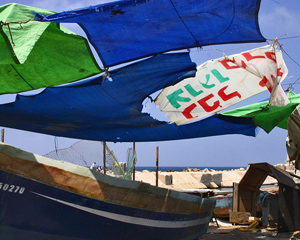
THE JEWISH CITIZEN
Congregation Beth Israel's exhibit shows Israel that American visitors photograph
By Donald H. Harrison
 LA JOLLA, California—You can bring home priceless and unique treasures from Israel just by pointing your camera and taking photographs of what you see before you. Depending on your sense of composition, lighting, and the technical abilities of your photographic equipment, the resultant photos may be destined for a scrapbook or computer disk, or perhaps even an exhibition such as the one now being mounted by Congregation Beth Israel in honor of Israel's 60th anniversary. LA JOLLA, California—You can bring home priceless and unique treasures from Israel just by pointing your camera and taking photographs of what you see before you. Depending on your sense of composition, lighting, and the technical abilities of your photographic equipment, the resultant photos may be destined for a scrapbook or computer disk, or perhaps even an exhibition such as the one now being mounted by Congregation Beth Israel in honor of Israel's 60th anniversary.
Images of Israel captured by congregants are being shown in the foyer of the sanctuary building through May 18. There are 183 photos included in a continuous slide show, and 42 photos have been printed and are mounted on a portable display screen.
I went to the exhibit on Sunday night with a family visiting from Israel. I thought it might be interesting for them to see what images of Israel American visitors found interesting, and in turn, which of those images they liked the best. The family members included three girls, Sapir Lazar, 15; and her little cousins Maya and Eden Peres, respectively 3 and 1.
Sapir, a high school student, was drawn to a photograph by Harven Raben titled "Class Expectations" showing children learning in an Israeli school. What attracted Sapir was "the many faces of the children," showing Israel's ethnic diversity.
Maya stopped in front of a picture of her country's first prime minister, David Ben-Gurion, and producer Clive David and declared that was the one she liked the best. After a conversation with family members, she did a sumersault in front of the picture after trying to stand on her head. What was all that about? In a popular Israeli video for children about the country's early history, much is made of the fact that Ben-Gurion liked to practice yoga—and to stand on his head—an exercise that he said helped him to think by rushing blood to his head.
Eden stood transfixed in front of a picture titled "Izzy's bat mitzvah" by Sheila Bliss. In that she doesn't speak yet, I'm not exactly certain what it was, but it may have had something to do with the fact that the picture was one of the few mounted at eye level for her. I'd like to think, however, that Eden was imagining her own bat mitzvah.
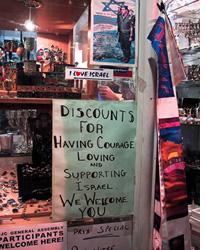 Some of the photographs in the exhibition were supplied by Joe Nalven, the exhibit's coordinator, to accompany this article. As I watched the slide show, I was impressed by the range of subjects that prompted Beth Israel's members over the years to lift their cameras to their eyes to compose a picture. There were camels, military tanks, Arabs at a market, Ethiopian Jewish school children, a market place, an olive tree, street scenes, road signs,the old City of Jerusalem, the Kotel, a man in a beret, a telephone booth, people getting onto a bus, women dancing, people with tambourines, Yemenites, Druze, Haredim; Rabin Square, Mount Herzl; soldiers--the range of subjects was unlimited. Some of the photographs in the exhibition were supplied by Joe Nalven, the exhibit's coordinator, to accompany this article. As I watched the slide show, I was impressed by the range of subjects that prompted Beth Israel's members over the years to lift their cameras to their eyes to compose a picture. There were camels, military tanks, Arabs at a market, Ethiopian Jewish school children, a market place, an olive tree, street scenes, road signs,the old City of Jerusalem, the Kotel, a man in a beret, a telephone booth, people getting onto a bus, women dancing, people with tambourines, Yemenites, Druze, Haredim; Rabin Square, Mount Herzl; soldiers--the range of subjects was unlimited.
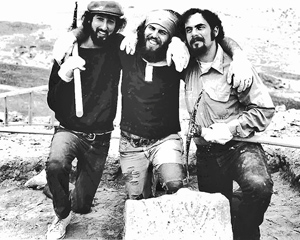 Rabbi Michael Berk, who is pictured Rabbi Michael Berk, who is pictured
at right of the adjacent black and white photograph of
archaeologists in Israel, suggested that the exhibit "really shows what in Israel moves American Jews" as well as "how much we love Israel." He said that among his favorite photos within the exhibit was one of Ha Kotel, "which moved me deeply."
Sima Oppenheimer created the slide presentation, while Steve Gould created a poster from some of the photos, which he framd within a map of Israel. Photographers and organizers of the presentation also included Stan Bliss, Steve Ritter, Bonnie Graff, Dan Abelon, Nancy Abelon, Roger Acheatel, Yoni Berk, Betty Byrnes, Clive David, Judy Fisher, Michelle Fogle, Carol Fox, Stephanie Hall, Barbara Haworth, Gail Karon, Jerome Levy, Mary Marshall, Beverly Miller, Sally Nalven, Joe Oppenheimer, Ruth Rassler, Vicki Raun, Aaron Ritter, Michael Ritter, Gerry Salomon, Jonathan Siegel, Sophie Vener, Tammy Vener and Susan Weiner.
 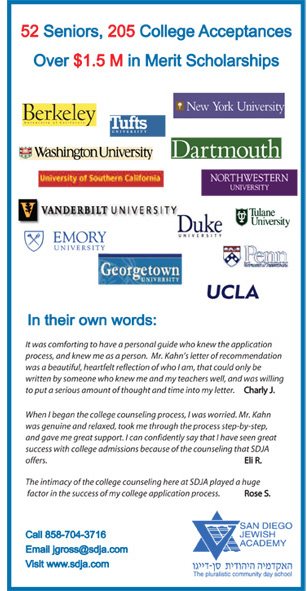


FROM THE SIDELINES
Christian Peacemaker Teams (CPT) provide necessary peace presence in Hebron
By Rabbi Dow Marmur
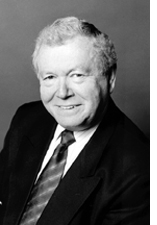 JERUSALEM—I met A. a few years ago in Toronto. He told me then that in his retirement he spends a couple of months every year in Hebron with Christian Peacemaker Teams (CPT). Over the years we’ve met in Jerusalem on a Sunday when he came to church, at times in the company of other team members. Like A., they’re religious women and men belonging to different denominations within the Church and beyond. JERUSALEM—I met A. a few years ago in Toronto. He told me then that in his retirement he spends a couple of months every year in Hebron with Christian Peacemaker Teams (CPT). Over the years we’ve met in Jerusalem on a Sunday when he came to church, at times in the company of other team members. Like A., they’re religious women and men belonging to different denominations within the Church and beyond.
CPT has been active in different conflict zones in the world. It came to Hebron in 1995, as its brochure has it, “in order to maintain a violence-deterring presence between Israeli settlers, soldiers and Palestinians. “ Its work, therefore, isn’t very different from what Israeli groups such as Machsom (checkpoint) Watch, Breaking the Silence, Rabbis for Human Rights and many similar are doing. Indeed, CPT is in touch with them.
CPT’s mission statement says: “Because we believe in a God of mercy and justice, we are not neutral about situations where one group is being oppressed by another. We do not affiliate ourselves with any particular political agenda, but we do believe that it is our calling as Christians to stand in solidarity with the downtrodden in conflict situations. We are totally opposed opposed to violence as a means, regardless of our opinion of the perpetrators and victims in any given incident. We believe that both violent and unjust acts demean the image of God in human beings.”
CPT activities in the old city of Hebron that’s currently under Israeli administrative control include: “visits to homes at risk of demolition and/or land confiscation; visits to schools to introduce CPT and our school patrol activity; accompaniment of farmers at planting times; and the monitoring of Israeli soldiers as they search homes.”
What A. and his friends had to tell me about conditions in Hebron confirms what I saw with my own eyes when I visited a year or so ago. The army is there to protect the settlers and little else. Some of the settlers, imbued with a perverted version of Jewish religious nationalism, are a menace to their neighbors and an embarrassment to Judaism. Palestinians are often without protection. CPT and similar organizations operating in Hebron are there as witnesses. Their aim is to inhibit settlers from attacking Palestinians.
Though I must admit at being suspicious of “do-gooders” from outside, I’m prepared to make an exception for CPT. Not only are the volunteers I’ve met women and men of highest integrity who in their working life (often as clergy, educators or members of religious orders) contributed much to society but, talking to them, I was left with the impression that they recognize the complexities of the situation and would not issue blanket condemnation of Israelis or express uncritical views of Palestinians.
Their involvement appears to be genuine. They shun lofty proclamations from a safe distance, as so many ostensibly liberal religious groups are prone to do. Instead, they give of their time and money to spend months at a time in Hebron under less than comfortable conditions in order to be of genuine help, not hypocritical grandstanding.
Each time I meet A. and his friends my respect for them grows. Because I know that this kind of activity could not be done by Jewish groups, due to settler “retaliation,” I’m grateful to these women and men who’re there to testify to values that Jews and Christians share.
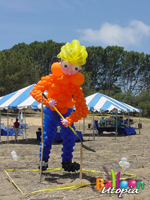 |
Balloon Utopia
Sandi Masori
619 339 8024
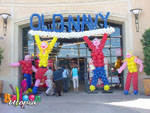 |
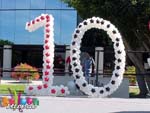
! |
 |



THE VIEW FROM JINSA
Iran increasingly frustrated in Iraq
By Shoshana Bryen
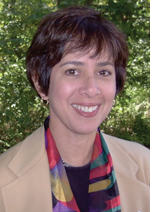 WASHINGTON, D.C.—Anyone who cares didn't need Gen. Petraeus's testimony to know that Iraq is a thousand percent better now than it was last September, and another thousand percent might make it almost tolerable. Iraq, indeed, wasn't the point of his testimony - Iran was the point. And the message is clear. WASHINGTON, D.C.—Anyone who cares didn't need Gen. Petraeus's testimony to know that Iraq is a thousand percent better now than it was last September, and another thousand percent might make it almost tolerable. Iraq, indeed, wasn't the point of his testimony - Iran was the point. And the message is clear.
Iran has been at war with the United States since the Revolution in 1979, because the Ayatollahs need an external enemy - and who better than we, always more likely to try to win them back than fight them (message to Obama). Fifty-five years after Moussadegh and 29 years after we dumped the Shah, the United States remains an essential bete noir. Earthquake relief; the rescue of Muslims in Bosnia and Kuwait; support for Kosovo independence; and the overthrow of Saddam, rescuing thousands of Shiite Marsh Arabs are irrelevant.
Persian Iran is on the march - building nuclear and long-range missile capability; spreading Shiite messianism and Persian influence; co-opting Syria; popping up in Africa and South America; arming and training Hezballah; even supporting Sunni Hamas - working with anyone who shares either or both of their goals: increased Islamic influence and the diminution of the United States.
Iraq has become an essential battlefield - NOT because we overthrew Saddam; that much even they appreciated - but because Iran assumed we would leave and allow them unfettered access to the Shiite Arab majority country and through that, direct access to Syria, Jordan and finally Israel. Iranian support was, at first, through proxies including Moktada Sadr and the Shiite parties. It was supposed to be enough.
The Americans were supposed to get bloodied and run. Iraq's Shiites were supposed to put religion before Arabism and certainly before Iraq-ism. We didn't and they didn't.
We made our stand with the Sunnis fighting al Qaeda, and at some point, the al Maliki government decided Iraq shouldn't be an arm of the Ayatollahs. The Iranians had to increase aid to their allies in Iraq and thus acquired increased visibility - something they did not want, but into which we forced them by not rolling over.
The offensive against Sadr's forces in Basra and Baghdad required American and British assistance. But a little-reported upon meeting over the weekend brought together all of Iraq's parliamentary parties except the Sadr parties in support of the al Maliki government. The Iraqi government and its army showed in Basra that they are forging a national identity as Iraqis, not as Shiites or Sunnis rentable by al Qaeda or Iran. Is this not the political "surge" we sought and the "reconciliation" we have demanded?
Gen. Petraeus rightly told Congress that Iraq is fragile and we have a lot of work left to do. This is no time to be sanguine. Even if Iraq continues to do well, it is only one front in the larger war against terrorists and the states that harbor and support them. And as Iraq continues improve, Iran will be looking for other fronts in its continuing war against the United States and the West


JERUSALEM DIARIES
20 ways you know it’s Pesach in Jerusalem
By Judy Lash Balint
 JERUSALEM—For the past several years I've been putting out a light-hearted '18 Ways You Know Pesach is Coming In Israel’ piece to describe the frenetic days leading up to Pesach in the holy city. JERUSALEM—For the past several years I've been putting out a light-hearted '18 Ways You Know Pesach is Coming In Israel’ piece to describe the frenetic days leading up to Pesach in the holy city.
This year, there are a few additional notable events that are driving the news cycles over here.
Apart from the Mid-East visit of the vile Jimmy Carter, who sets off sometime in the next few days for his tete-a-tete with arch-terrorist Hamas leader Khaled Mashaal in Damascus, there’s the controversy over the Chametz Law. Never heard of it? Well, since 1986, Israel has had a law on the books that forbids leavened products from being displayed in public during Pesach. For the duration of the holiday, supermarkets cover their shelves containing non-Pesach items with thick white paper—whether to abide by the law or to avoid causing further pain to customers suffering from bread withdrawal is not clear.
Last week, all hell broke loose when a Jerusalem judge overturned the law (that no one had ever been charged with violating…) opining that it’s permissible to sell chametz, as long as it’s not publicly displayed. Shas is trying to get the Knesset to discuss the matter before the Pesach recess. Meanwhile, Haaretz revealed in a poll published last Friday that 68 percent of the population answers “no” when asked if they are planning on eating chametz during Pesach.
Citizens of southern Israel have far weightier concerns, as they face the prospect of a Passover under fire—for the seventh year running. The ceaseless daily barrage of Kassam and Katyusha rockets toward our southern cities and surrounding western Negev kibbutzim has shattered any semblance of the 'enhanced security' we were promised by the 2005 Gaza pullout. Almost everyone who supported and promoted the "disengagement" plan now acknowledges that destroying 22 Jewish communities in the Gush Katif section of the Gaza strip has done nothing to further the path to peace.
As if that weren’t bad enough, almost all the former Gush Katif residents are still in temporary housing almost three years since their eviction. Many who moved into the vast and dismal caravilla camp of Nitzan, near Ashkelon are still unemployed and dealing with the emotional and psychological effects of displacement.
Meantime, on Pesach the extent of the dire poverty of hundreds of thousands of Israelis is exposed. Latest figures indicate that roughly 20.5% of Israeli families live below the poverty line in 2008, a slight increase from last year’s 20%. Moreover, 24.7% of Israel’s residents and 35.9% of its children live in impoverished families. Families and the elderly form almost endless lines in every city around the food banks and soup kitchens that do their best to provide the basics necessary to celebrate the holiday. The Mesamche Lev group distributed 46,278 pairs of shoes to 10,200 needy families last week, while all the other voluntary social welfare organizations report unprecedented demand for their services this Pesach.
In every Charedi neighborhood during the week before Pesach, men and boys block the narrow streets with handtrucks piled high with sacks of carrots, potatoes, oranges and cartons of eggs--all courtesy of the Kimcha D'Pischa funds that funnel donations from abroad to the Charedi communities, specifically for Pesach food.
The tourists, largely oblivious to our problems and cheerfully putting up with our current hot and dusty spell, have descended on us with avengeance. Most visible are the busloads of pilgrims from eastern Europe, Nigeria and an assortment of Asian countries--the Jews arrive in much smaller family groups, excited to be in Israel for one of the three pilgrimage festivals.
So, as the popular Israeli expression goes, "We overcame Pharoah, we'll overcome this too..." This year, as always, we'll celebrate Pesach, the festival of our liberation and the birth of the Jewishpeople as a nation in the hope that we'll soon merit a saner reality.
Meanwhile, for those who have read this far…here's an updated version of the 18 (now 20) Ways You Know Pesach is Coming To Israel:
1. The Israeli Army presses into service some 200 IDF chaplains including reservists, to commence the massive task of kashering the hundreds of kitchens, mess halls and eating corners used by soldiers all over the country.
2. Street scenes in Israel change every day before Passover according to what's halachically necessary: In the days before the holiday,yeshiva students wielding blow torches preside over huge vats ofboiling water stationed every few blocks on the street and in the courtyard of every mikveh. The lines to dunk cutlery, kiddush cups and the like start to grow every day, and, at the last minute, blow torches are at the ready to cleanse every last gram of chametz fromoven racks and stove tops lugged through the streets.
3. No alarm clock needed here--the clanging garbage trucks do the trick as they roll through the neighborhood every morning during the two weeks before Pesach to accommodate all the refuse from the furious cleaning going on in every household. Two days before the Seder there's the annual pick-up of oversized items and appliances. Dozens of antiquated computer monitors and old toaster ovens stand forlornlynext to the garbage bins on their way to the dump.
4. The day before Passover, families replace the yeshiva students, using empty lots to burn the remainder of their chametz gleaned from the previous night's meticulous search. In vain, the Jerusalem municipality sets up official chametz burning locations and issues strict orders banning burning in any other areas. Yeah, right…
5. Most flower shops stay open all night for the two days beforePesach, working feverishly to complete the orders that will grace the nation's Seder tables.
6. Meah Shearim and Geula merchants generally run out of heavy plastic early in the week before Pesach. In a panic, I make an early morning run to the Machane Yehuda market to successfully snap up a few meters of the handy counter-covering material.
7. No holiday in Israel is complete without a strike or two. In years past the Histadrut Labor Union threatened to launch a general strike 10 days before the holiday to protest planned economic cuts. Ben Gurion Airport was included… This year, it's government workers who are out on strike... The Civil Servants Labor Union launched a two-day strike this week, partly halting many services at the Interior and Finance ministries in protest against what they say is unfair promotion of Israel Discount Bank over Bank Yahav in providing services to civil servants. Yes, you heard that right…
8. Observant Jews mark the seven weeks between Passover and Shavuot by carrying out some of the laws of mourning--one of these is the prohibition against cutting hair.
Good luck if you haven't scheduled an appointment for a pre-Pesach/Omer haircut. You can't get in the door at most barber and beauty shops.
9. Mailboxes are full of Pesach appeals from the myriad of organizations helping the poor celebrate Pesach. Newspapers are replete with articles about selfless Israelis who volunteer by thehundreds in the weeks before the holiday to collect, package and distribute Pesach supplies to the needy.
This year, Hazon Yeshaya Soup Kitchens plan on serving 7,000 meals per day during Passover. More than 15,000 food parcels will be distributed before the holiday, just by this one organization.
10. The biggest food challenge to those of us Ashkenazic, non-kitniyot (legume) eaters is finding cookies, margarine etc. made without kitniyot, but an increasing number of Ashkenazic rabbis are coming out with lenient rulings regarding legumes.
11. Since most of the country is on vacation for the entire week of Pesach, all kinds of entertainment and trips are on offer. Ads appear for everything from the annual Boombamela beach festival, kids’ activities at the Bloomfield Science Museum and concerts in Hebron,
the City of David, Sderot and the Dead Sea.
12. Pesach with its theme of freedom and exodus always evokes news stories about recent olim. This year, general immigration numbers are significantly down, but American aliya has enjoyed a mini-boom. For a couple of thousand new Israeli-Americans, it'll be their first Seder
at home in Israel. Israel Radio announces that 700 prisoners will get a furlough to spend the holiday with family.
13. This just in: According to Israel's Brandman Research Institute study, 43 million people hours will be spent nationwide in Israel's cleaning preparations for Passover this year. How does that break down? Of those cleaning hours, 29 million are done by women and 11 million by men. Persons paid to clean do the remaining 3 million hours at a cost of NIS 64 million ($15.6 million).
14. Israel's chief rabbis sell the nation's chametz to one Hussein Jabar, a Moslem Arab resident of Abu Ghosh and manager at Jerusalem's Renaissance Hotel. Estimated worth: $150 billion secured by a down payment of NIS 20,000. Jabar took over the task some 14 years ago, after the previous buyer, also from Abu Ghosh, was fired when it was discovered his maternal grandmother was Jewish.
15. Radio commercials for all sorts of products and services are set to Seder melodies. Last year, Volkswagen used the Mah Nishtana tune to advertise its cars. Another favorite is "Echad Mi Yodeya?--Who KnowsOne?" that has become a jingle for one brand of coffee. "Four mothers,
three fathers, two sugars, one cup of coffee!"
16. For those of us too lazy to go to our rabbis to sell chametz, one Israeli website offers the possibility of performing this ritual in cyberspace: For those of you out there with Hebrew enabled computers, take a look at http://www.kipa.co.il/passover/sell.asp
17. Sign of the times? A few years ago, former Sephardi Chief Rabbi Mordechai Eliyahu issued a ruling that Viagra may be taken on Pesach provided the pill is encased in a special empty capsule so that thedrug itself is not in direct contact with the body. In a move to ease another kind of Pesach yearning, the Israeli branch of Ben & Jerry's ice cream has developed Matza Crunch flavor. French vanilla with chips of chocolate-covered matza make up the new flavor, which is being sold for $4.50 a pint in Israeli supermarkets.
18. At the Kotel last week, I watched as workers performed the twice-yearly ritual (pre-Pesach and pre-Rosh hashanah) of removing thousands of personal notes from the crevices of the Kotel to bury them on the Mt of Olives.
19. Guess Who's Buying Matza? According to Iyad Sharbaji, the manager of Gadaban Supermarket at the entrance to the the Galilee Arab town of Umm al Fahm, his Matza is consumed entirely by local Arabs. Sharbaji told Haaretz that he generally stocks up on Matza for Passover and has to replenish stock before the end of the holiday, due to keen demand by locals.
It turns out the avid consumption of matza is not a new trend in Arab towns and villages, whose inhabitants view the traditional Jewish food as nothing more or less than a welcome and refreshing change in the menu. "It's not a religious issue, and certainly not a political one," Sharbaji explains.
20. A sign of our economic times--supermarkets entice shoppers with a promise to allow us to settle up the bill in six equal monthly payments on the credit card. Yes, many of us will still be
paying for the Seder come Rosh Hashana!

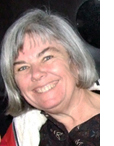
 Nancy Harrison Nancy Harrison
cruise & tour specialist
(619) 265-0808
Not only better prices, but excellent, caring service!

ADVENTURES IN SAN DIEGO JEWISH HISTORY
Editor's Note: Following are some stories from the Southwestern Jewish Press from 1947, dealing with the community's continuing aid to Holocaust survivors in Europe and its efforts to establish summer camping and a Hillel house at home. If you have historical topics about the San Diego Jewish community you would like us to explore, please e-mail your suggestions to editor Don Harrison at sdheritage@cox.net
San Diego Sends $50,000 from
Emergency Fund To Aid European Jews
From Southwestern Jewish Press, April 24, 1947, page 1
$50,000 will be forwarded this week by the San Diego United Jewish Fund in response to an emergency appeal to all communities from Henry Morgenthau, JR., General Chairman. Because the needs are so great, the united Jewish Fund Board voted to take the money from emergency funds for this purpose.
“In asking for $170,000,000, the United Jewish Appeal is impelled by the life and death nature of the tasks that confront its agencies. The money is needed now—desperately. Therefore, every community should empty its treasury at once of every dollar that is on hand and send a remittance to the United Jewish Appeal. Every contributor can make his sympathy constructive immediately, if he will forward to his local community treasury a very large part if not he total, of the pledge he has made. WE are racing against despair and disaster, cash will speed us to our mission,” Mr. Morgenthau declared.
With $166,807 reported in, Louis Steinmann and Max Rabinowitz, co-chairmen of the 1947 campaign, stated that the campaign would continue until every Jew in San Diego had done his part. Volunteer women workers under the leadership of Julia Neumann and Bernice Soule, are making house to house canvass so that everyone may have the privilege of giving. Men in the trades division are calling on those who have not yet given who are in business in the downtown section, {w}hile young people are continuing their drive to go over $5,000.000.
Eli Levenson, president of the United Jewish Fund urged every worker to see his prospects now and every prospect to make their contribution so that the campaign may be closed by May 15.
S.D. to Have Summer Camps
From Southwestern Jewish Press, April 24, 1947, page 4
The Community Center Planning Committee, appointed by the United Jewish Fund to investigate the needs for a Jewish Community Center in San Diego and to make whatever plans are necessary, will sponsor at 5-233k home camp for children from the ages of 6 to 14 as the first step in a group work program for Jewish children in San Diego. The program will be under the supervision of trained personnel, directed by Albert A. Hutler.
The home camp will open on Monday, June 23 and will run through July 25th. It will operate on a 5 day a week schedule from 9:30 a.m. to 3:30 p.m. Present plans call for the children to meet at the Temple Center and from there to follow a set program under the direction of counselors. The program will center around group activities designed to bring out the most creative abilities in each of the children and to give the children an opportunity for group living. Among the activities planned will be sports, swimming, dancing, music, camp lore, story telling, hiking, horseback riding, arts and crafts and many other activities. There will also be trips to points of interest in San Diego County.
Each child will bring his own box lunch. Parents will receive a recommended bill of fare for luncheon but the home camp will provide each child with milk and cookies.
Arrangements have been made with the City County Camp Commission for the use of Camp Palomar in the Palomar Mountains for one week starting July 28. This camp will be for boys ranging from the ages of 8 to 5 who will be able to spend one week away from home under trained camp leadership.
It is expected that the fee for the 5 weeks of home camp will not exceed $50.00 or approximately $10.00 per week including milk, cookies, and transportation. The fee for the week at Camp Palomar, including transportation, will not exceed $25.00. Registrations will be limited so it is suggested that those interested in pre-registering their children immediately contact Albert A. Hutler, 609 First National Building, Franklin 0171. The date for registration will be announced in the very near future.
S.O.S Wants Books
From Southwestern Jewish Press, May 22, 1947, page 3:
With the realization that emigration will be slower than expected, it is necessary to provide for a longer stay of Jewish survivors in Displaced Persons’ Centers. Therefore, books for educational, cultural and leisure-time activity have become increasingly important. To date, communities have been slow in responding to this part of the collection campaign.
San Diego is asked to collect as many books as possible during the months of May and June, so that the first shipment will be available to go to Europe by July 1, 1947. Books should be mainly in Yiddish or some foreign language useful to the survivors such as Hebrew, Polish, German, Hungarian, Roumanian, Bulgarian, French and Russian. Very important, medical journals in all languages, including English, are needed. Picture magazines can be used. The books must be in good condition.
Bring your contributions to Douglas Tire Co., 11th and Market St., or to the Hebrew Home for the Aged. Don’t delay! Surely every family, can spare two books.
Hillel Councilorship at State College a Possibility
From Southwestern Jewish Press, May 29, 1947, pages 1, 5.
Fifty interested students of San Diego State College met at dinner last Tuesday evening at the San Diego Club with officers of Lasker Lodge of B’nai B’rith to discuss the feasibility of establishing a Hillel Councilorship on their campus.
Among the speakers to the group were two classmates, Hadarah Domnitz and Ruth Field, who, with Chairmen of Hillel activities here, Morrie S. Kraus and Edward Breitbard, attended a Hillel Institute in Glendale the week before. These young ladies were much impressed with the program Hillel embraces and spoke effectively in favor of the Councilorship here.
Jack Winnick, who is the student director of Hillel on the University of Southern California campus in Los Angeles also spoke and told in detail of the many phases of the five point program there and how the students benefit by participating in all of them. “To have a good leader,” said Jack, “you have to have good followers, well-informed, intelligent followers; and Hillel will train you for community leadership.”
Albert A. Hutler, executive director of the local United Jewish Fund, who was the student director in 1931 on the University of Illinois campus was asked to tell how the group function then, which Mr. Hutler did very capably. Much progress has been made since that time, although the original program as it was set is still working.
The principal speaker of the evening was Rabbi Judah M. Cohn, Western Regional Director of Hillel, who told the audience what preliminary steps have been taken so far for the establishment of the Hillel Councilorship at State College. Much groundwork has been laid and Rabbi Cohn was confident that all the Jewish students at State would recognize the benefit to Judaism as well as to themselves and their community by their active participation in such a program. He elaborated on the work being done on 166 campuses to date and fervently hoped that San Diego would be the 167th group for Hillel.
After a good discussion of questions and answers between the students present and the speakers and committee, at which every eventuality was brought up by the thinking students, a vote was taken to determine the main question. By an almost unanimous vote, the group decided to establish a Hillel Councilorship at San Diego State College this fall. To bring this about, a steering committee of the students was formed immediately, which committee will meet with Rabbi Cohn, the Lasker Lodge committee and the Councilor to be appointed for them to draft a Constitution, and plan an effective program to put into action with the beginning of the fall semester.

SAN DIEGO JEWISH WORLD THE WEEK IN REVIEW
Donald H. Harrison in Spring Valley, California: Bancroft probed then dismissed 'Lost Tribes of Israel' origin for Native Americans
Lloyd Levy in Eilat, Israel: Eilat: Both a historical and tourist gem
Sheila Orysiek in San Diego: Way it was—a Jewish innocent strikes out
Adventures in San Diego History: Some items from 1947 include a refugee family reunited in San Diego; a new Conservative rabbi takes his post; and a seder is conducted for the residents of the San Diego Hebrew Home for the AgedBarry Jagoda in San Diego: Biblical scholar David Noel Freedman dies
Rabbi Baruch Lederman in San Diego: He flew literally on a wing and a prayer
Rabbi Dow Marmur in Jerusalem: Eric
Yoffie v. John Hagee: Round One
Marissa Palin in San Diego: And what of the women of Passover?
Ira Sharkansky in Jerusalem: Should Palestinians be rewarded for seven years of violence and intransigence?
Adventures in San Diego History: Today we feature stories from the immediate Post-World War II period.
Donald H. Harrison in San Diego: Stop trying to turn Obama into Foxman
Eran Lerman in Jerusalem: Gaza terrorists apparently want to make their own people absolutely miserable
Rabbi Dow Marmur in Jerusalem: Jews must recognize the new Poland
Sheila Orysiek in San Diego: Chapter Three in the serialization of her novel, Reluctant Martyr
Rabbi Leonard Rosenthal in San Diego: Ridding ourselves of spiritual chametz
Adventures in San Diego History: Stories of pre-World War II San Diego
Ulla Hadar in San Diego: A new correspondent introduces herself
Donald H. Harrison in San Diego: Mayor envisions Lindbergh-Rodriguez solution for future San Diego air travelers
Rabbi Dow Marmur in Jerusalem: Israeli news diet: peace, democracy, sex
Janet Tiger in San Diego: Salute to Rosentals goes tricultural
Adventures in San Diego History: We conclude our series of stories from 1922 in which members of San Diego's Jewish community looked at their past, present and future.
Donald H. Harrison in Rancho San Diego, California: Searching for the 'Lost Tribes of Israel' at the Heritage of the Americas Museum
Sheila Orysiek in San Diego: Tales From My Garden:The Third Day...
Adventures in San Diego History: Members of San Diego's Jewish community in 1922 looked at their past, present and future. Our series continues.
Link to previous editions
< BACK TO TOP
|
|

 —
—